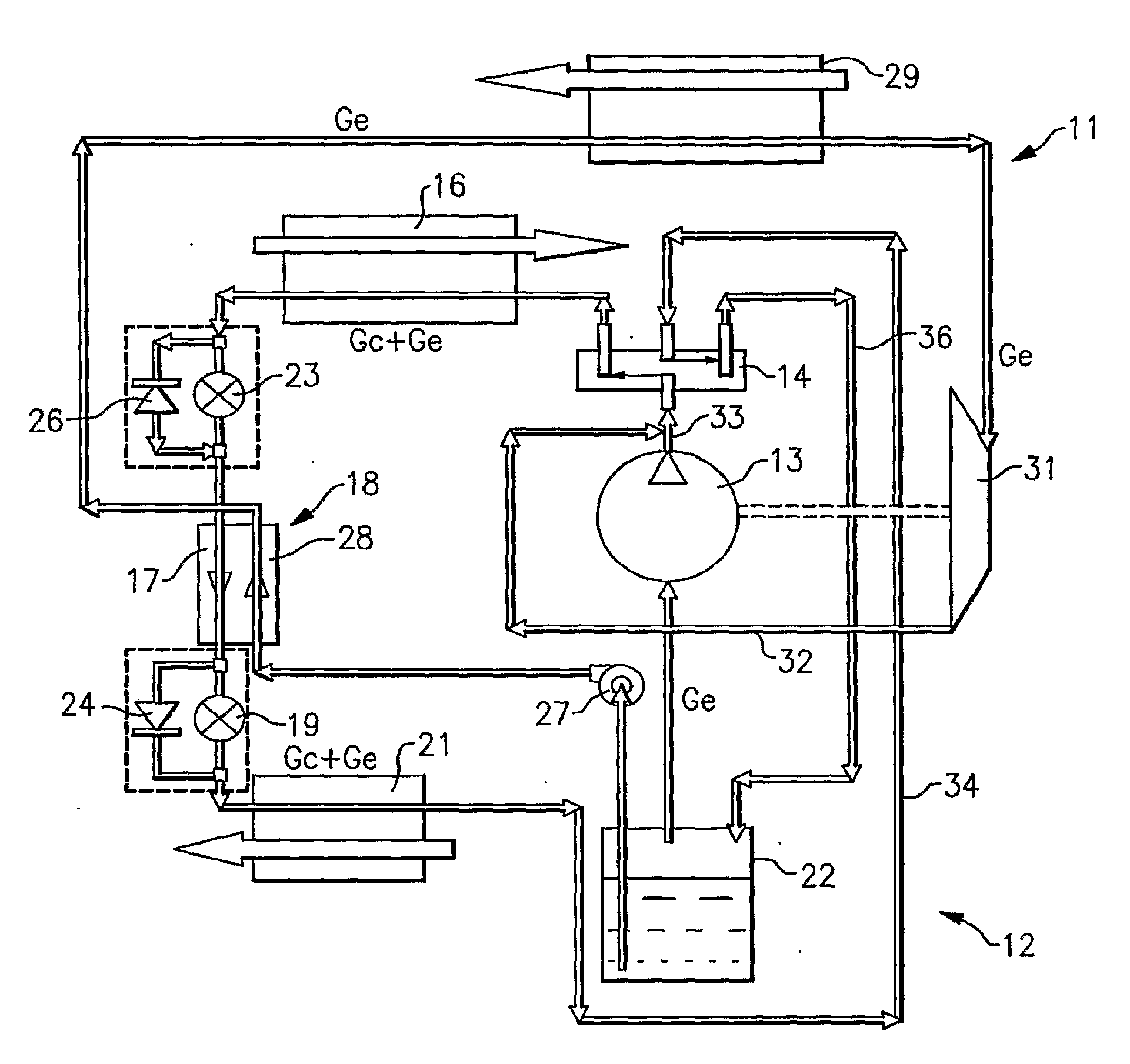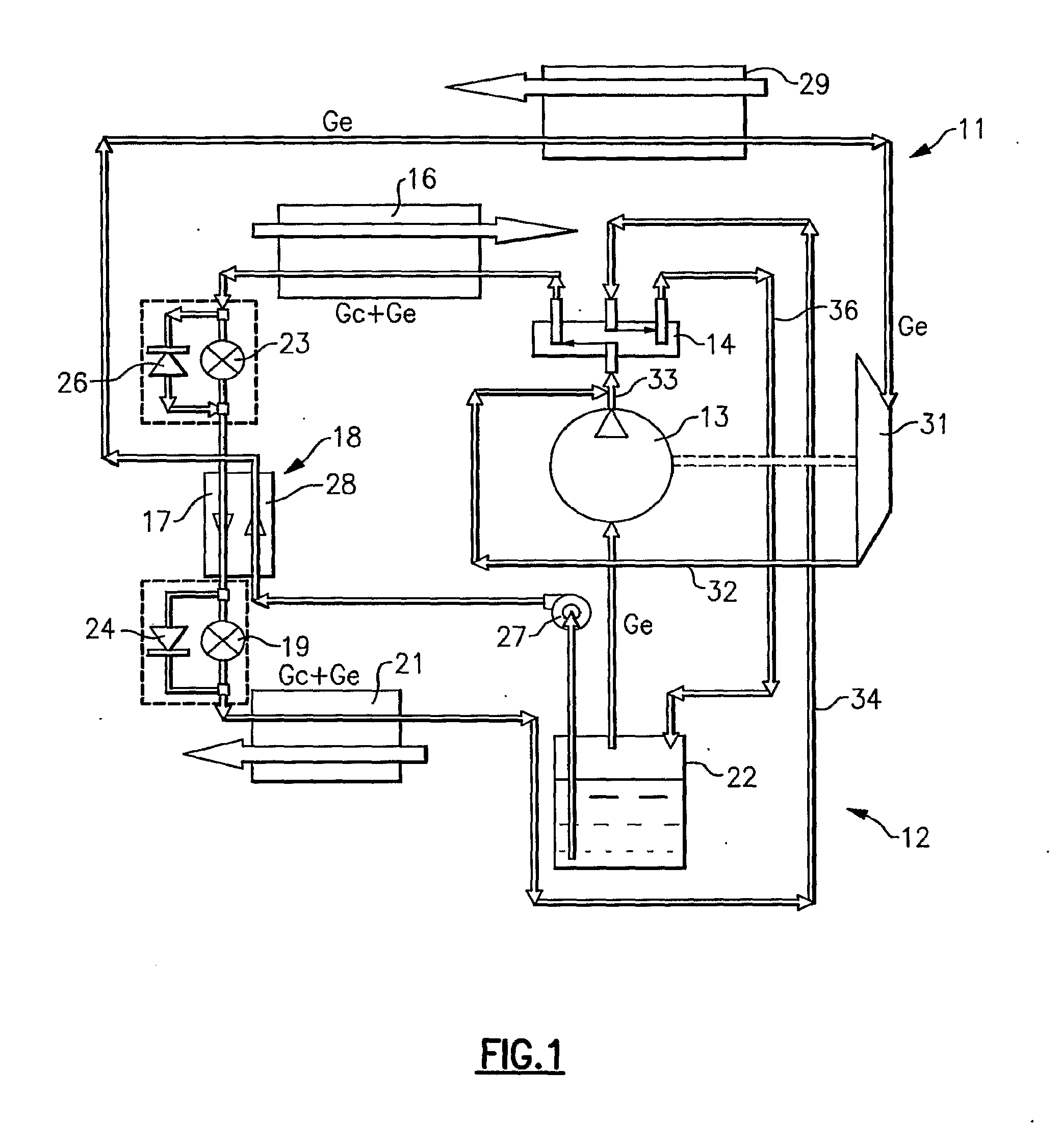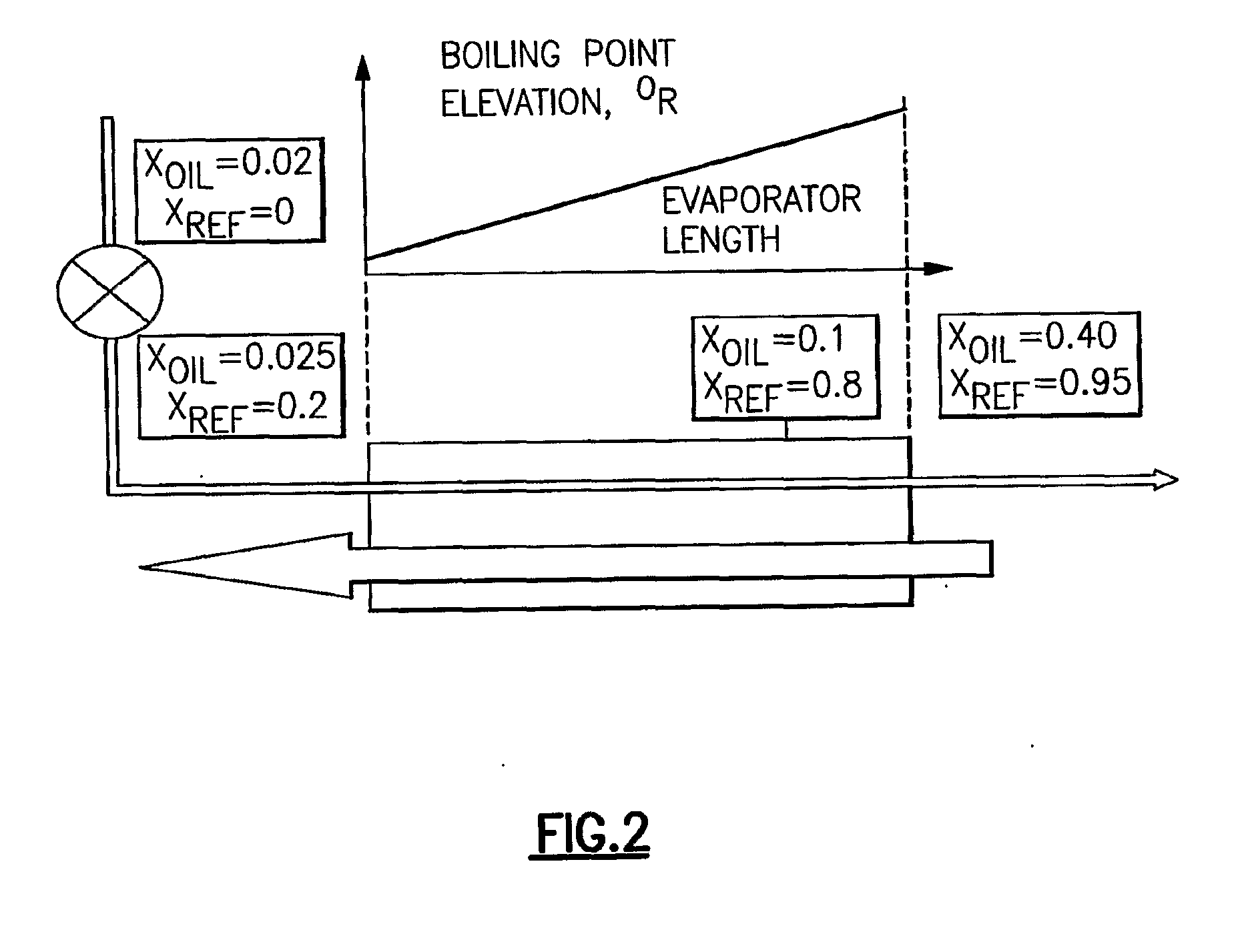Thermally activated high efficiency heat pump
a heat pump and high-efficiency technology, applied in the field of combined vapor compression and rankine cycle system, can solve the problems of reducing efficiency, affecting the efficiency of heat pumps, and affecting the efficiency of cooling systems, so as to improve performance characteristics and increase efficiency
- Summary
- Abstract
- Description
- Claims
- Application Information
AI Technical Summary
Benefits of technology
Problems solved by technology
Method used
Image
Examples
Embodiment Construction
[0022]Shown in FIG. 1 is a system which, in accordance with the present invention, utilizes a combination of a Rankine and a vapor compression cycles. The cycle combination may be called a vapor compression and expansion cycle. The combined system may be called a vapor compression and expansion system.
[0023]The vapor compression circuit 12 includes, in serial flow communication relationship, a compressor 13, a reversing valve 14, an outdoor heat exchanger 16, one side (or a first pass) 17 of an economizer heat exchanger 18, an expansion device 19, an indoor heat exchanger 21, and a suction accumulator 22. Also, included is an expansion device 23 for use in the heating mode of operation. Bypass valves 24 and 26 may be provided to bypass the respective expansion devices 19 and 23 when switching between cooling and heating modes of operation. The reversing valve 14 is, of course, selectively controlled to operate in either the cooling or heating mode of operation.
[0024]The Rankine cycl...
PUM
 Login to View More
Login to View More Abstract
Description
Claims
Application Information
 Login to View More
Login to View More - Generate Ideas
- Intellectual Property
- Life Sciences
- Materials
- Tech Scout
- Unparalleled Data Quality
- Higher Quality Content
- 60% Fewer Hallucinations
Browse by: Latest US Patents, China's latest patents, Technical Efficacy Thesaurus, Application Domain, Technology Topic, Popular Technical Reports.
© 2025 PatSnap. All rights reserved.Legal|Privacy policy|Modern Slavery Act Transparency Statement|Sitemap|About US| Contact US: help@patsnap.com



